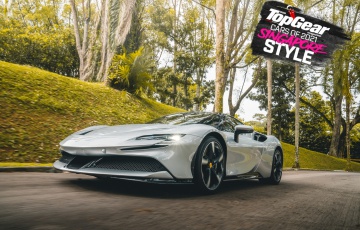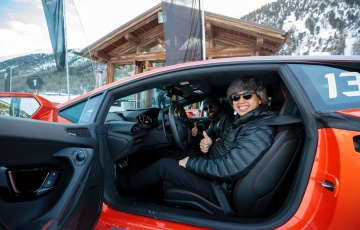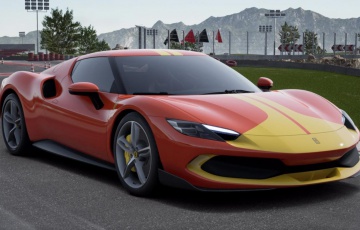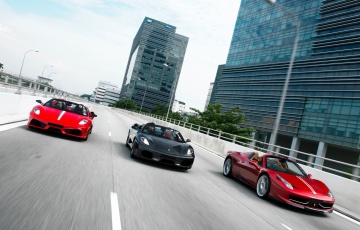TGS talks to: Dieter Knechtel, President of Ferrari Far East & Middle East
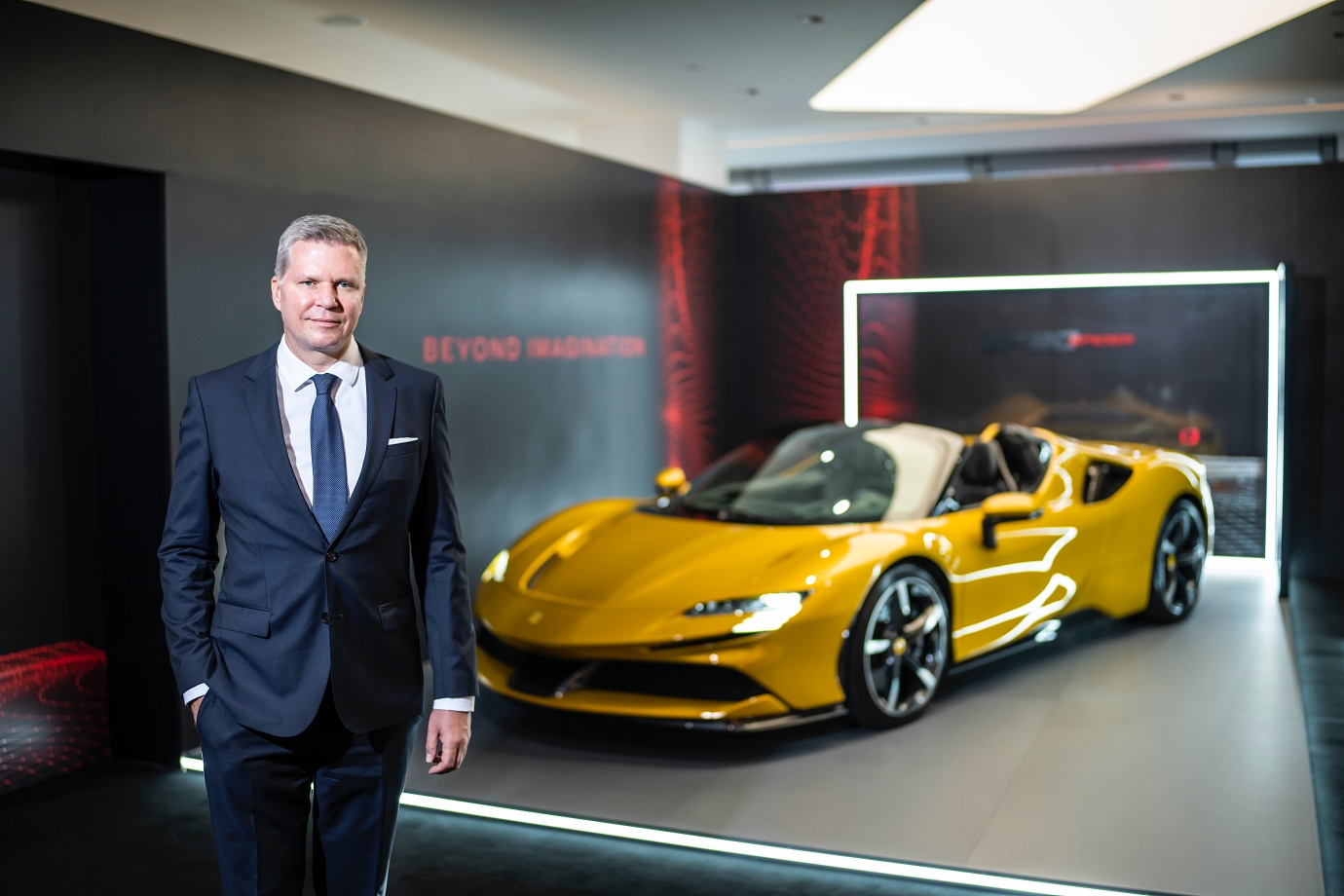
Singapore - The plan was to pore over the factory fresh SF90 Spider in the showroom before parking myself on a plush leather couch, shooting the breeze with Mr. Dieter Knechtel, Ferrari’s regional head honcho responsible for Southeast Asia, Northeast Asia, Middle East and India.
Instead I am rushing to shave and look presentable for a Zoom call because we are well into week one of a second round lockdown in Singapore.
A warm, enthusiastic voice says hello and Dieter Knechtel appears on screen in a crisp white shirt and dark tie. CEO power move. I am feeling a little underdressed.
A career automotive professional, Knechtel has lived in Asia for almost 20 years starting in 2003 as Renault’s APAC marketing manager in Tokyo, traversing several Asian markets and later leading Porsche’s dealer group in China before being handpicked to head Ferrari’s APAC business.
Witnessing Asian economic expansion first hand over the last 20 years has equipped Knechtel with knowledgeable perspectives into the rarified segment of supercar buyers, which he generously shares in his frank, down-to-earth manner.
He describes each market in detail, naturally enthusiastic at discussing the diversity of his broad portfolio. Japan, Ferrari’s second strongest market, has a huge passion for Ferrari, motorsport and F1 and technology.
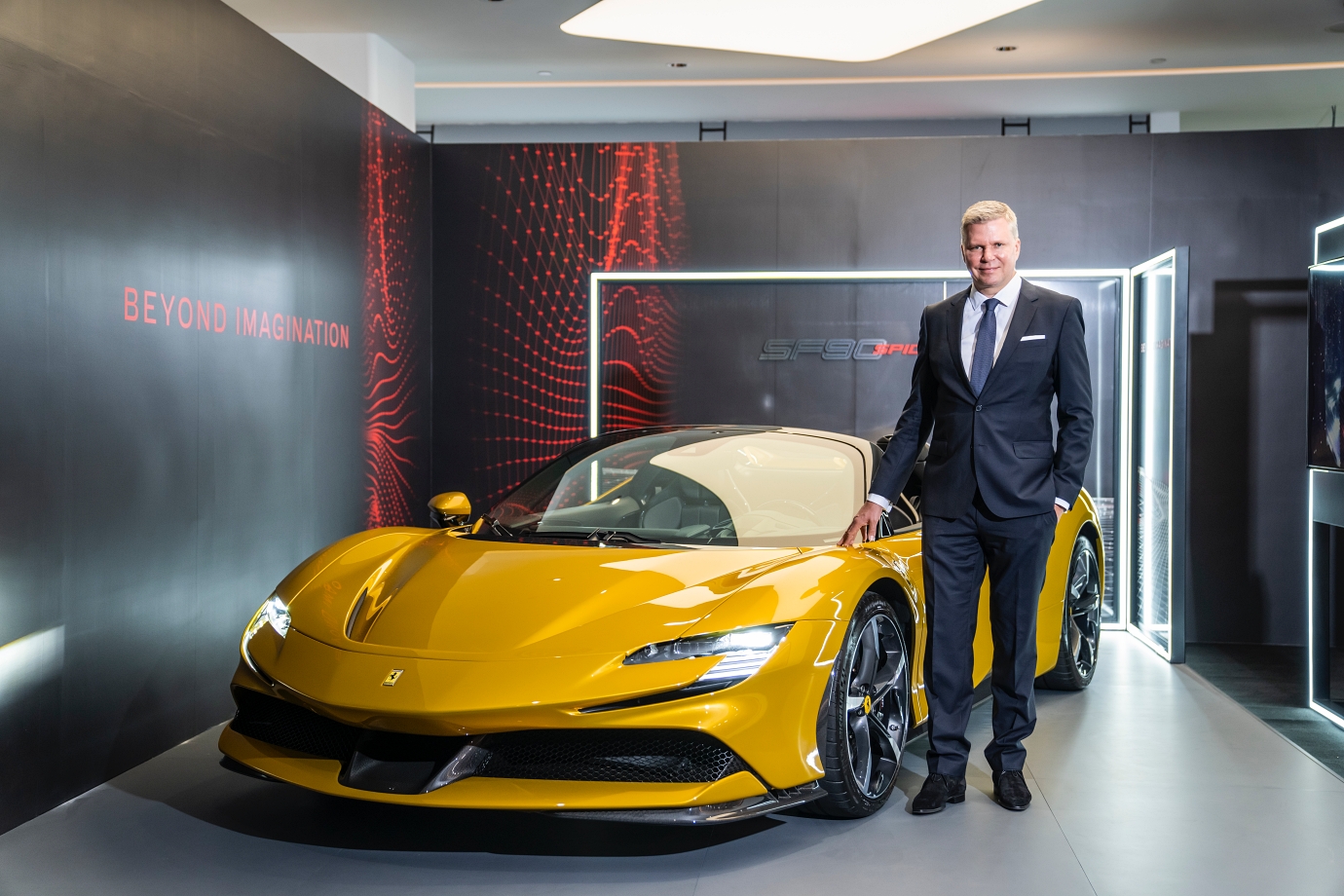
China’s demand is driven by massive domestic consumption with South Korea as a young, fast growing market. ASEAN is “an amazing business” with Thailand and Malaysia as strong markets and particularly Singapore, where 2020 saw one of Ferrari’s best performances in recent years.
Common across Asian markets is a deep understanding of brands and good products. Knechtel observes that consumers here recognise Ferrari’s strong combination of standing out – even showing-off – but at the same time being discerning, exclusive and maintaining value.
These resonate with the accelerated economic pace of the region and has created an unprecedented population of high net worth individuals – Ferrari’s target customer base.
Easy math on the surface but this is only half the story – most established supercar makers have not seen a corresponding level of growth in the same markets and, in a few cases, have needed highly-publicised bailouts and restructuring.
Ferrari on the other hand, seems to be virtually untouchable in a challenging segment that constantly craves the latest and greatest. Knechtel explains that Ferrari has been very successful in rolling out a product strategy that suited the expansion of this ultra-luxury market and tap into “new segments where we had traditionally not been present”.
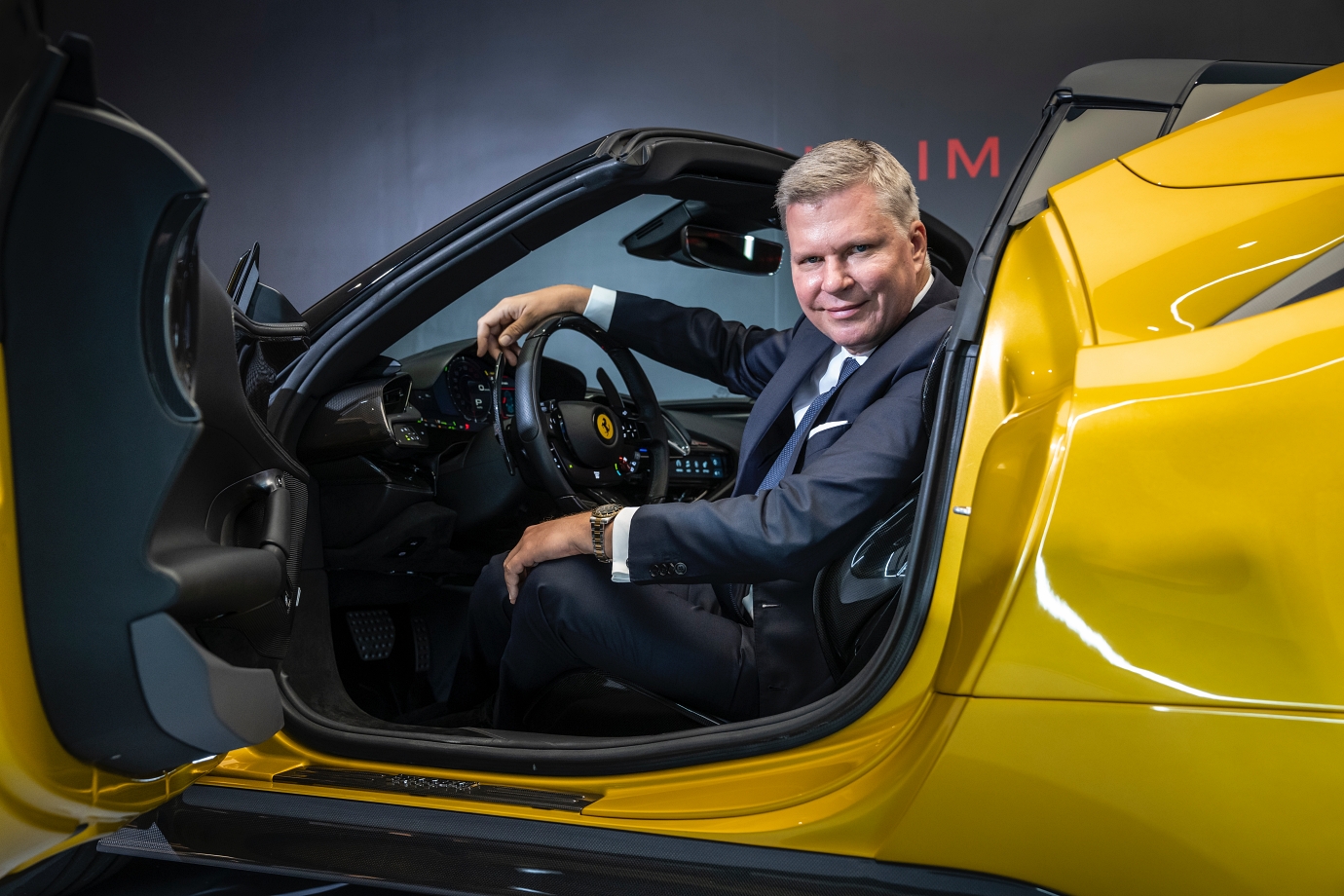
Not been present? Hasn’t Ferrari always been a top end product?
The answer is far more nuanced – Knechtel underscores that Ferrari is very established in this market and has been “doing this for 75 years” and is “very clear in what we do” but at the same time, acknowledges a need to change and address demands of a wider customer base.
Today’s Asian supercar buyer is “very knowledgeable” with “refined taste” and “knows exactly what he/she wants”. This is not lost on Ferrari’s competitors, given the relentless pace of high-end supercar releases.
Ferrari’s edge, Knechtel elaborates, is in how the brand has broadened the definition of the “supercar”, offering “the finest and most powerful products in the high end supercar market that appeal to a wide range of people”. The Ferrari of today, he explains, is no longer an “extreme choice for die hards” as it was 20 years ago.
Today’s Ferrari customer, particularly in Asia, has very different expectations of what their car is to them and how it will be used – “not just because they are fantastic products but also at the same time they have become very comfortable, very safe and an everyday driving choice”, with “status and with style”.
The approach is very much in sync with Ferrari’s dramatically broader, diverse customer base.
Compared to the 90’s, Knechtel is keen to point out that today’s Ferrari owner is equally driven, and yet much younger.
The shift is particularly pronounced in Singapore, where the age of the average Ferrari owner is now 40-something, compared to 50-60 as recently as five years back.
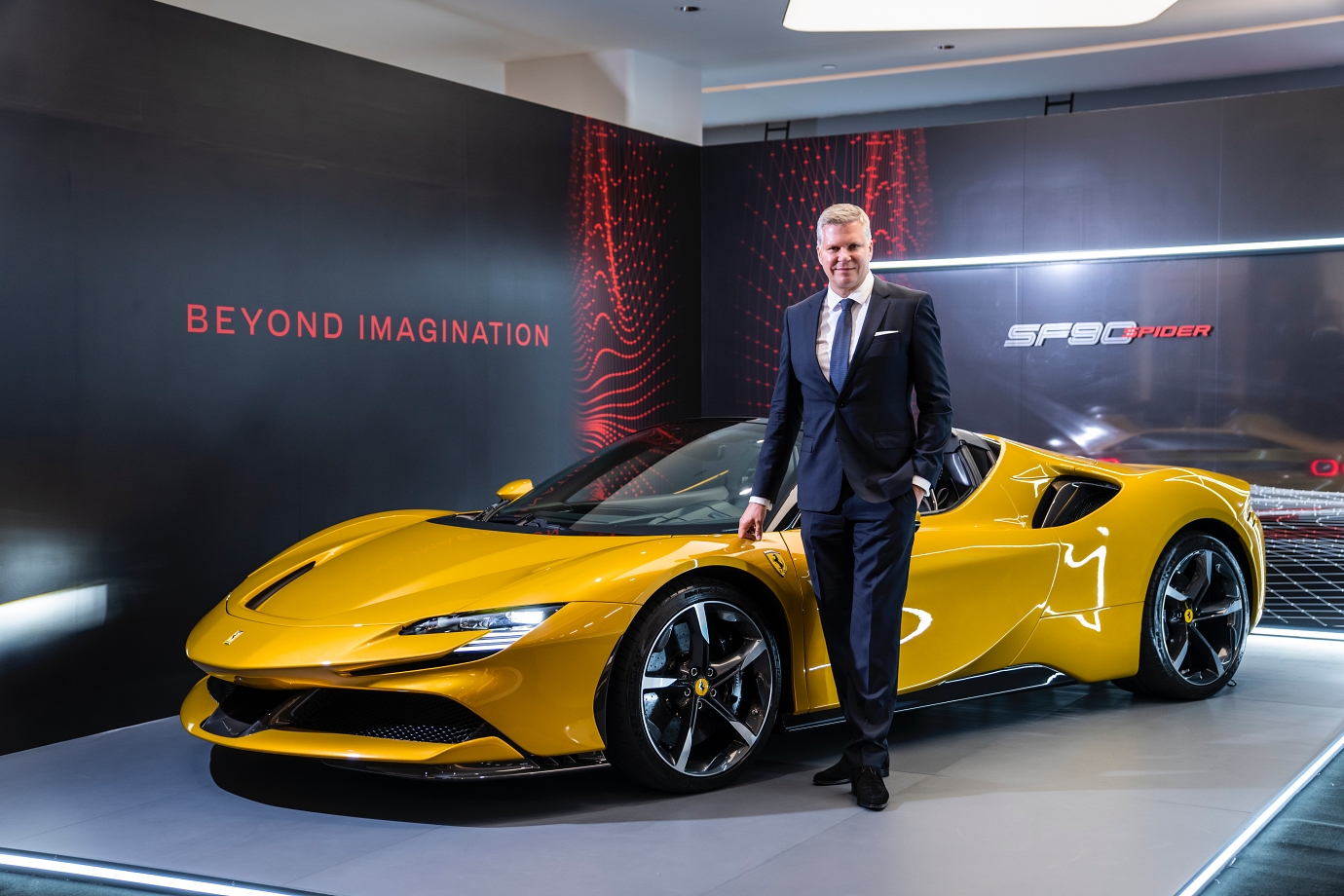
Look past the average and it gets more interesting – the population of owners below 40 has tripled over the same time frame, accounting for 22 per cent of Ferrari owners in Singapore in 2020.
This is a pattern Knechtel observes not just in ASEAN as well as newer, upcoming markets like South Korea where a younger demographic now packs customer events.
The other interesting pattern Knechtel keenly highlights is the much higher proportion of women owners today.
While not as pronounced as the average age shift, successful women form a fast growing proportion of Ferrari owners today, particularly in Singapore and China.
While fortuitous, none of this comes as a surprise to Ferrari. A quick comparison of the latest Forbes or Hurun list with its 2010 edition will yield clear observations that technology is driving a lot of wealth in this region, with tech entrepreneurs achieving financial success at an early age.
The tech-savvy appeal of Ferrari’s SF90 models is clearly reflected in its runaway success, particularly with younger, first time buyers.
First released in 2019 in fixed roof “Stradale” guise and lately of the more extroverted “Spider” persuasion, the company’s first PHEV is a V8 hybrid 1,000hp HD screen laden active aero technological tour de force.
More importantly, as Knechtel highlights, the SF90 serves as Ferrari’s redefinition of a supercar by making an extreme level performance and technology, traditionally the domain of its top end V12 cars like the 812 Superfast, available in Ferrari’s normal range of cars that is available to everyone*, rather than as a limited edition or special series (*okay “everyone” but not “anyone”… you know what he means).
TGS readers will also be familiar with the Roma, which Knechtel highlights as a “truly different concept” of a Ferrari that has not been seen for quite some time, which was made to address a segment of “understated luxury” not commonly associated with modern Ferraris.
Knechtel notes that Asian buyers already recognise that Ferrari’s have “the best residuals on the market” and are good value propositions as assets that can be enjoyed without losing value over time.
Knechtel is keen to point out that this is all by design as part of Ferrari’s strategy to reach out to “people we do not know before” and is very encouraged that sales figures are testament to the strength of this strategy and the Ferrari brand in Asia.
Perhaps more important than bringing new members to the Family is rewarding loyal, existing ones.
“Icona” is Ferrari’s ultra-exclusive range launched to attract interest and provide inspiration.
Cars like the Monza SP1 and SP2 represent the pinnacle of Ferrari’s “top performance and highest levels of execution”, while reflecting the brand’s rich heritage and models of the past.
And yes, if you have to ask…
With its illustrious racing history and stunning back catalogue, would it not make sense then for Ferrari to revive a number of its older legends and release The Ultimate Restomod?
After all, the commercial success of Singer’s “reimagined” aircooled 964s and GTO Engineering’s “brand new” 250 SWBs shows there is a demand.
The answer is an emphatic “No”.
To Knechtel, Ferrari’s automotive heritage and history are very important and “one of our greatest assets”, but Ferrari “will not follow such trends” and has a very different view of how to honour its classics.
The Ferrari Classiche department is dedicated to preserving, caring for and restoring for these glorious products of the past.
As Knechtel proudly informs me, “we are the only car manufacturer that still has every single blueprint of every car we have ever built in our history and have a wealth of knowledge on our historic cars all over the world”.
He adds that it is not Ferrari’s business to try and modify these classics or lob in a more powerful engine. Rather, the only approach to preserve the heritage of these legendary cars is to maintain originality, using Ferrari Classiche’s capability to produce original parts based on original blueprints.
Most importantly, this preserves the value that Ferrari collectors enjoy from originality and scarcity of their historic products.
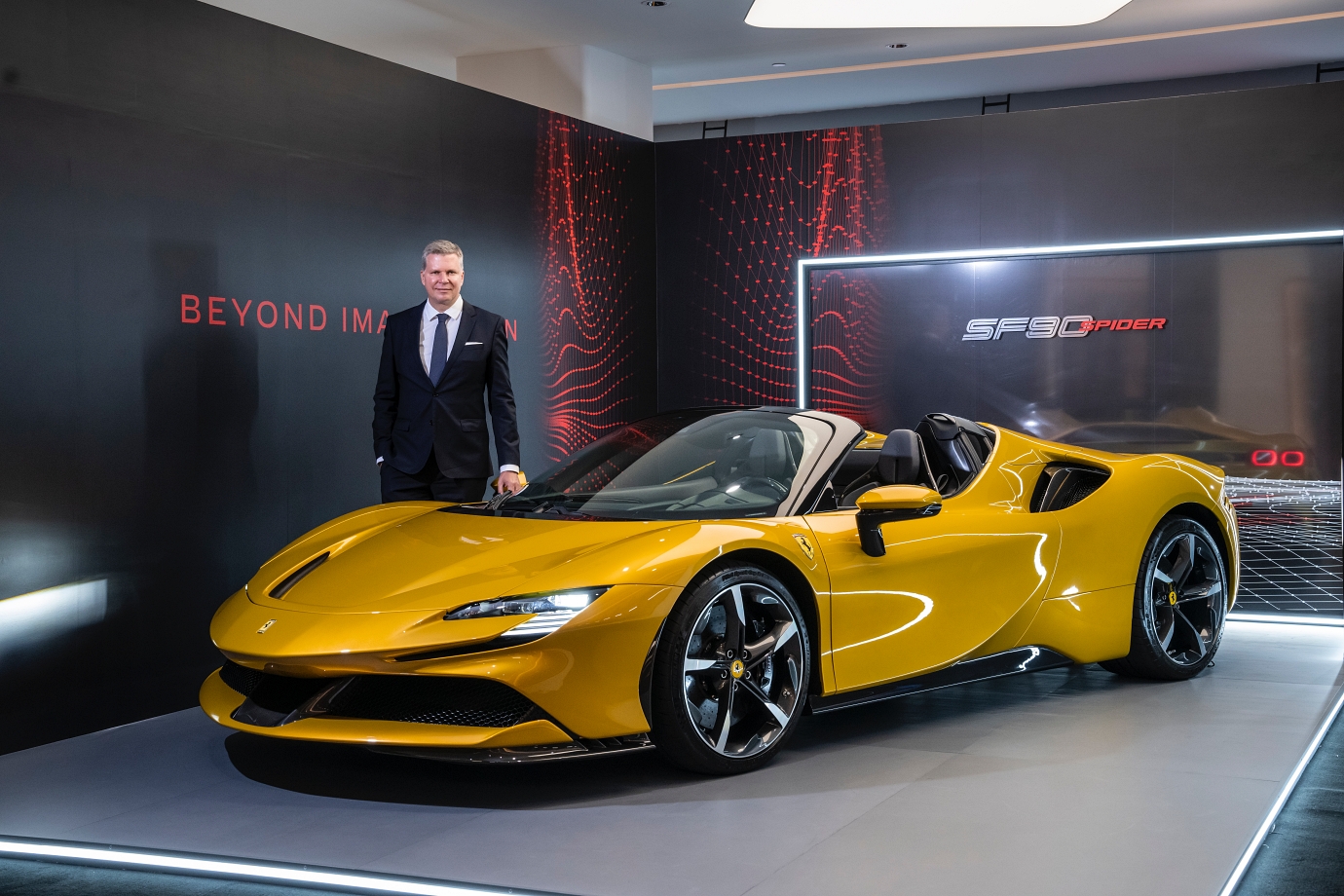
So what’s next? Ferrari’s landmark strategy announced in 2018 promised 15 new cars by 2022.
We learn this is firmly on track with us currently at “new car number eleven”. But with so many models and releases, is it too much, too soon? Maybe for some but Knechtel does not think so.
He views the high, fast-paced consumption as a sign of our times and the supercar options available today simply reflect demand.
Ferrari’s supercar competitors have certainly responded with increased new announcements and Knechtel clearly embraces the competition as a chance to “challenge and reinvent ourselves” while softly and confidently stating that Ferrari “knows very well our own position in the market and there is no reason to be shy about that.”
While it may appear that Ferrari has a Midas touch, Knechtel lets on that the company’s success has been borne of continued hard work and good planning. Ferrari has not escaped challenges many other businesses have faced in the past 18 months.
“We did not have any historical reference point for a pandemic situation. We were trying to understand what would happen and referred to the financial crisis – but that was financial, not a health crisis.”
Knechtel further explains that Ferrari had expected the impact of Covid to be far more severe based on the many different scenarios the company had drafted.
Knechtel is pleased to point out the Ferrari has moved through these difficult times very successfully.
Challenges in deliveries due to factory closures and lockdowns in early 2020 did not worry the management team too much because demand remained strong and order books were full, bolstered by the success of new launches.
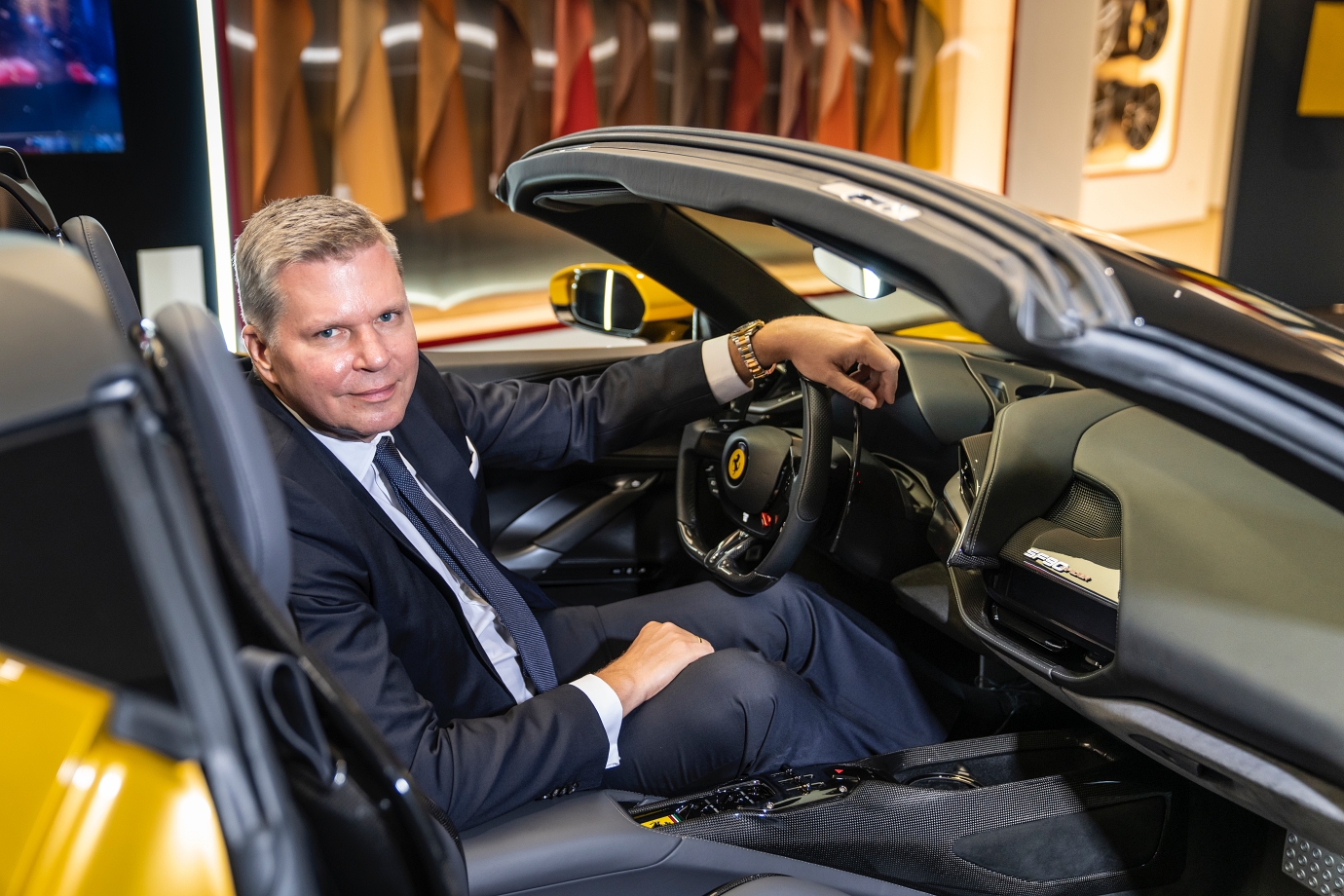
It certainly helps that Ferrari can leverage several other tools beyond volume to drive value.
Its latest V12 releases, the 812 Competizione and Competizione A, are cited as examples of products at the tail end of their life cycle at the peak of their evolution and allocated as a reward to Ferrari’s most loyal customers.
Limited in number and sold out quickly, the Special series cars are highly sought after and have been a strong pillar of Ferrari’s success.
A significant but less obvious contributor has been Ferrari’s personalisation programme. There is a huge and growing demand from Ferrari customers who want individualised cars with their own personal touches.
While challenging to handle and coordinate, especially if requests get a little *ahem* esoteric, this is a hugely profitable stream that has become an essential business driver for Ferrari in Asia.
The region will continue to be a strong growth engine for Ferrari as markets mature.
Knechtel notes that Asian buyers already recognise that Ferrari’s have “the best residuals on the market” and are good value propositions as assets that can be enjoyed without losing value over time.
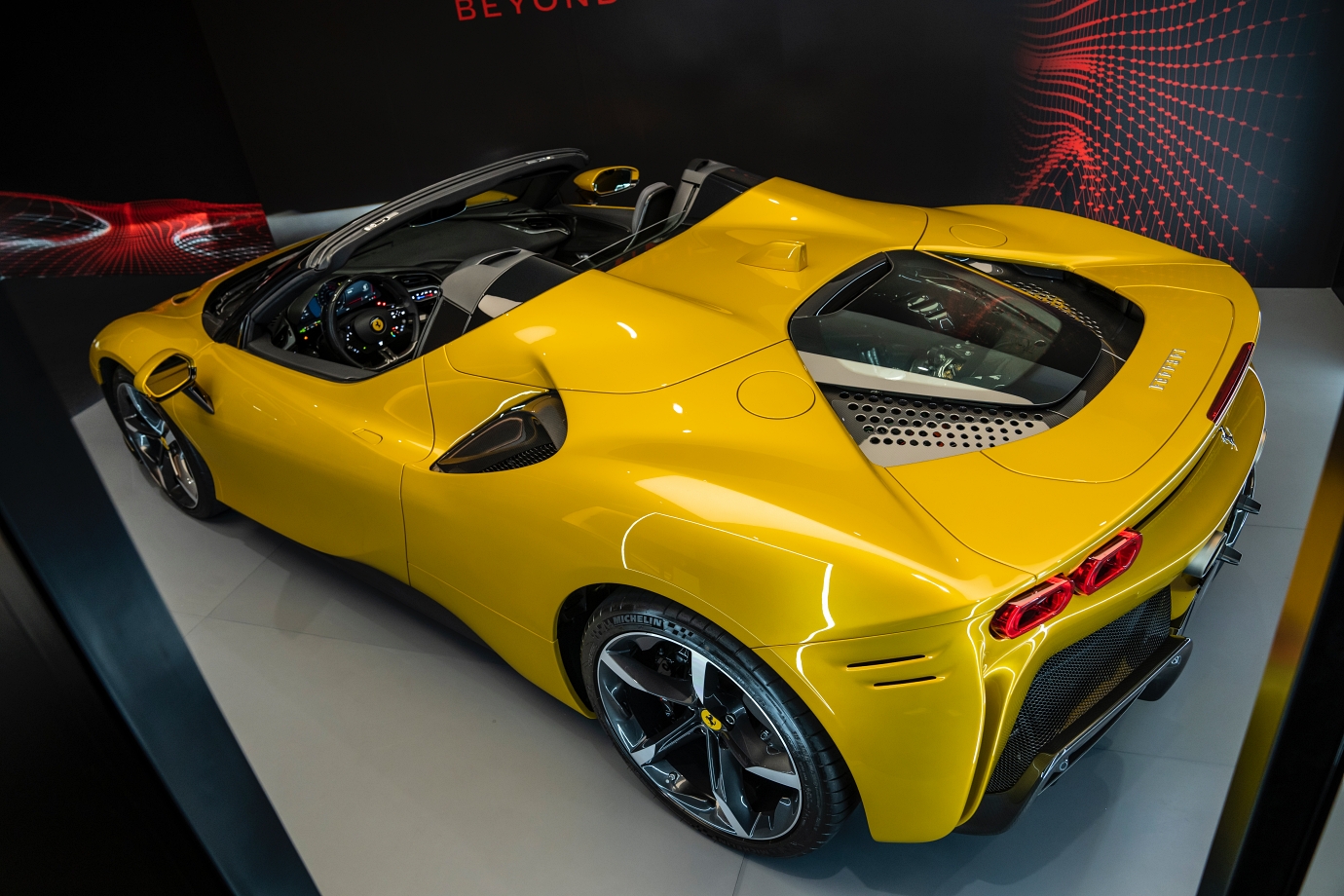
Without going into specifics (trust me, I tried. Dieter Knechtel is a very, very tight lipped man), we can say that the remaining four releases going into 2022 will be very exciting and are firmly on track, together with a fully electric model by 2025 that will be an addition to the existing range, with further developments depending on how regulations and consumer demands evolve.
The electrification strategy will be executed in a “very disciplined way” based on an interpretation in motorsports and road cars that will bring “uniqueness and the passion of Ferrari to new generations of owners”.
While Knechtel was coy about the form of this interpretation, he stressed that Ferrari already has the tools and technology to support multiple configurations, which more importantly, is in line with Ferrari’s core values and with the uniqueness and exclusivity that buyers expect.
It looks like we’ll have to hold our breath till next year when updates to the 2018 strategy will be announced.
STORY Gene Kwee
PHOTOS Ferrari Far East






